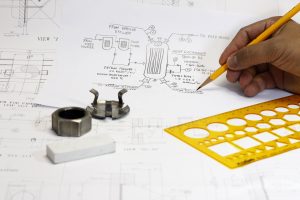
Do you want to design pressure equipment? Are you familiar with the design requirements for a typical ASME boiler and pressure? A poorly constructed pressure vessel is a potential source of danger despite being an integral part of ensuring that your liquids and fluids are safe.
Over the years, there have been numerous cases of flawed pressure vessels causing serious accidents. For this reason, this article will outline three factors and design requirements to consider during pressure vessel engineering. But first, what exactly is a pressure vessel?
What Is A Pressure Vessel?
A pressure vessel is a sealed container that can withstand pressure significantly higher or lower than the external pressure while holding liquids, gases, or vapours. It is useful in industries, including petrochemical, oil and gas, chemical, and food processing. It can also be used in a reactor, flash drum, separator, and heat exchanger
Each pressure vessel must be used within the established temperature and pressure ranges. Pressure vessels require extensive testing, are challenging to construct, and take a long time to complete. This ensures they won’t harm the environment if their contents accidentally leak out.
Pressure vessels must reach the ideal pressure for a given application to function correctly, e.g., maintaining air in a scuba tank. They can send pressure directly or indirectly by using valves and release gauges. Pressures can range from 15 to 150,000 psi, and temperatures frequently exceed 400 °C (750 °F). The capacity of a pressure tank ranges from 75 litres (20 gallons) to thousands of litres.
Factors To Consider When Designing Pressure Vessels
Choosing to design a pressure vessel is not simple. The process is tiresome, expensive, and quite challenging. You cannot, however, forego the importance of having a pressure vessel at hand as it has various uses. Below are the top three factors to consider if you are seeking to design a pressure vessel.
1). Design: How you construct the pressure vessel is the most crucial consideration. A pressure vessel’s design should have enough pressure and weight to hold the contents efficiently. When designing a pressure vessel, some things to consider are static and dynamic pressures, corrosion, reaction forces, ambient and operating temperatures, and thermal and residual stress. The pressure vessel’s shape and degree of complexity are additional considerations.
2). Material: Steel is one of the most popular materials for pressure vessels because it has many advantages. Carbon and low alloy steels, duplex steels 2205 and 2507, 300 series, and high-temperature stainless steel are some of the most frequently used materials in fabrication. Aluminium and nickel alloys like Inconel, Monel, and Hastelloy are considered suitable for the task. Consider seeking advice from a knowledgeable stainless steel pressure vessel manufacturer for guidance through the various materials.
3). Construction: Each component to assemble a pressure vessel has a specific function. Ensure that the various components are per international standards before welding them together to create the ideal pressure vessels for your task. Good welding is crucial when it comes to pressure vessels, and doing it incorrectly may fail your potential pressure vessel. Consider taking the necessary safety measures to ensure the pressure vessel is sturdy and secure.
How To Design A Pressure Vessel
You must be careful when designing a pressure vessel as they operate under high pressure. A leaking or burst pressure vessel can cause irreparable damage to people and property. The foundation of constructing a pressure vessel is the ASME Section VIII code.
The code regards the following components as crucial in designing a pressure vessel:
- Internal and external design pressure
- Test pressure
- Design temperature
- Standard construction materials
- Support
- Loading
The pressure vessel design formula, according to the international design codes, is:
α = PD/2t
Where; α = tensile stress, P = internal pressure, D = shell diameter, and t = shell thickness.
According to the ASME Section VIII division, here is the formula for calculating the shell thickness:
t = PR/(SE – 0.6P)
Where; t = shell thickness, P = internal pressure, R = cylinder radius, S = tensile stress, and E = joint efficiency.
Final Thoughts
It’s crucial to consider everything that could have an impact on a pressure vessel when designing one. Additionally, you must carefully review the specifications to ensure that you include all the crucial details that may significantly impact the pressure tank’s longevity and dependability.
Register Your Pressure Vessel Design
Once you have published and registered your pressure vessel design, the pressure vessels constructed using your design will require to be registered with the relevant authority in Australia. In this regard, a pressure vessel inspector will examine your design sample before approving its registration.
Consult Sherwood Engineering for assistance with the final step of putting your pressure vessel into service. Our skilled verifiers have experience working with all of Australia’s registration bodies and can advise you on the registration process. Talk to us for assistance with your pressure vessel design verification and registration.
Give us a call at (02) 9437 3566 or leave an enquiry if you would like to learn more about our pressure vessel engineering design and support services.
